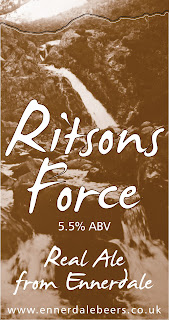
The good thing about not being one of the world’s best-known brewers is that when brewing stops, there aren’t thousands of disappointed customers hammering on the door, and I don’t feel I have let anyone down.
The bad thing is that there aren’t thousands of mourners, either. But I like to think that there are one or two puzzled punters out there who are wondering where their weekly fix of Ennerdale Blonde has gone.
To cut a very long story very short, me and the other half worked our socks off to create a reasonably profitable business making and selling some good beer. We had the odd flop, the occasional infection, and lots and lots of rows. But we were making it, and as we gained in confidence and started getting more adventurous, eminent beer swiggers helped us out with good reviews. Thanks, Dave, I’m glad you enjoyed the Ritson’s.
And that’s where it all went horribly wrong. After standing back for three years, our ‘silent’ co-directors saw that all was becoming good, and wanted to buy me out for a pittance, but I didn’t want to sell so they went to law and shut us down.
They have now bought the assets of the company (but not the debts) and they are hoping to be brewing at Croasdale sometime soon. Good luck to them, and I mean that most sincerely, folks. It’s bloody hard being a brewer and a salesman and a businesswoman and a drayman and everything else.
So hard, in fact, that me and the old man are going to do it all again, in a new brewery in the near future. We’ll take the lessons of the past, and the contacts we’ve made with suppliers, and most of all the support and friendship of the wonderful community of microbrewers. But we won’t be taking the kit we have fitted and welded and hammered and banged and humoured into shape, and we won’t be taking a whole host of things left at the Barn one evening in the sincere belief that we would be back to rescue them.
So it’s farewell, trusty swimming towel. You were bought at Lewis’s in Manchester long, long ago, in pre-decimal days, and accompanied me to school swimming lessons every week. Fraying round the edges, you served as a gym rag in the aerobic boom of the early 80’s and you lived in a variety of rucksacks in my fellwalking days during the 90’s. Finally, much reduced by splashes of caustic but still bearing the name tag my mum sewed on you in 1968 you fulfilled a vital role in the development of Ennerdale beers by mopping up the drips from the hop filter. I will never see you again, swimming towel, but I salute you.
P.S. I’m going to continue wittering on, pestering other brewers, and learning about beer. The blog will doubtless move but it’s still going to be out there somewhere. I might even start writing about beer for a change!
P.P.S. Mancunians of a certain age will doubtless have different memories of Victoria Baths - the cold, the rusty taps, the swing-doors on the always too small cubicles, the eye-searing combination of chlorine and urine .... but I thought this picture was best.

